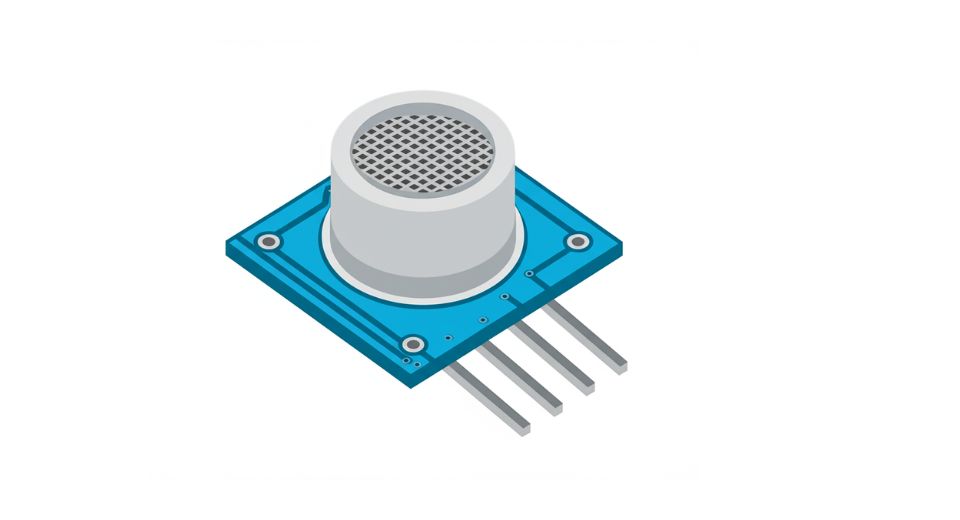
May 28, 2025

The report from MetaStat Insight presents very complete research of the global gas sensors market and assesses its current scenery and its future prospects. Gas sensors, basically an equipment used for detecting gases in any ambiance, find constructive application in several industries, including motor vehicle, healthcare, environmental monitoring, and industrial security. The blooming demand for these sensors worldwide is a direct consequence of evolving safety codes, pollution abatement measures, and advancements in smart technology.
Global Gas Sensors market is estimated to reach $1,100.1 million in 2025 with a CAGR of 6.2% from 2025 to 2032.
These gas sensors measure gases concentration from the atmosphere and transform such information into an electrical signal to monitor any dangerous or combustible gases that might give rise to hazardous conditions. In the past few years, some technological evolution in sensor material and manufacturing processes have really improved gas sensors' sensitivity, selectivity, and ruggedness. Coupled with these changes, the modification of gas sensors from their traditional functions have brought these gas sensors into consumer technologies such as smartphones, wearables, and home automation systems. The advancement in the Internet of Things (IOT) ecosystem has greatly helped the proliferation of gas sensing technologies, where environment-ready equipment provides credible and real-time indications.
In location-wise, there are some areas responding to the stringent environmental controls and requirements for workplace safety standards. With drains of these industrial zones, namely oil and gas, chemical manufacturing, and mining, gas sensor applications would have to be considered one of the engineering disciplines in which toxic and flammable gases present hazards.
India has grown with gas sensors for anesthesia monitoring, respiratory devices, and instruments at a medical level. As hospitals and clinics demand ever more accurate and compact sensors, businesses are investing in miniaturization and higher performance to meet these special requirements.
On the technical side, the market features a variety of coexisting gas sensors, including electrochemical, semiconductor, infrared, and catalytic sensors. Each type offers distinct advantages to accommodate various applications. By way of example, semiconductor sensors are widely used because of their low cost and high sensitivity, whereas gas like carbon dioxide is preferably detected with infrared sensors with high accuracy. Research streams in new materials such as graphene and metal-carbonic structures will sometime in the future yield new potentialities for increased lifespan and lower power consumption.
Market dynamics are affected not only by technological progress but also by geopolitical and economic factors. Changes in rules aimed at reducing carbon footprints and increasing air quality have encouraged governments and private enterprises to invest heavy in gas detection technologies. These policies often make the real -time monitoring of air quality in urban areas and industrial areas compulsory, thus meets demand. In contrast, ups and downs in raw material prices and disruption of supply chain can affect the cost and availability, affecting the overall market trends.
Cooperation between sensor manufacturers and end-users is becoming increasingly common, which promotes the development of customized solutions to meet specific requirements. For example, in the motor vehicle sector, monitoring integrated sensor emissions in vehicles and help in compliance with environmental standards. Meanwhile, in agriculture, gas sensors help maintain optimal greenhouse conditions by monitoring the level of carbon dioxide and ammonia. These niche applications highlight that the versatility of the gas sensor contributes to their widely adoption.
Competition within this market has intensified, both established companies and emerging startups have tried to remove their share. The firms are focusing on strategic merger, partnership and acquisition to increase their technical abilities and expand their geographical access. Investment in research and development is a priority to keep pace with rapid changing technology and consumer demands. In addition to product innovation, service aspects such as calibration, maintenance and data analytics are gaining importance, giving companies additional avenues for development.
Consumer awareness about environmental issues is also shaping the market. With increasing concerns about air pollution and indoor air quality, individuals and organizations are using gas sensors to monitor houses, offices and public places. Smart city projects worldwide are incorporating environmental sensors including gas detectors to manage urban air quality and ensure public safety. This trend is expected to run continuous investment in sensor network and related infrastructure.
However, the industry is facing some challenges. High cost of advanced gas sensors can limit adopting, especially in value-sensitive markets. Additionally, sensors require issues related to accuracy, intervention from other gases and the ongoing innovation over time. Manufacturers must balance the performance with ability to expand their customer base. Regulatory compliance and certification processes can also be complex and time -consuming, especially for products intended for international markets.
Despite these challenges, the future approach to the gas sensor area is positive. Create a fertile environment for growing industrial automation, demand for environmental stability, and integration with digital technologies. Emerging economies investing in infrastructure development and pollution control presents unused capacity. In addition, the continuous development of smart devices ensures that the gas sensors will be more embedded in daily life.
Finally, the broad insight distributed by the metastat Insight paint a detailed picture of opportunities and trends shaping the global gas sensors market. The combined effects of technological innovation, regulatory structures and increasing environmental consciousness are constantly carrying forward this market. Addressing the challenges of cost and performance, those companies are well deployed to capitalize on the demand for expansion in various fields worldwide. The development of this sector will not only enhance security and environmental protection, but will also contribute to widely adopting smart and connected technologies globally.
Drop us an email at:
Call us on:
+1 214 613 5758
+91 73850 57479